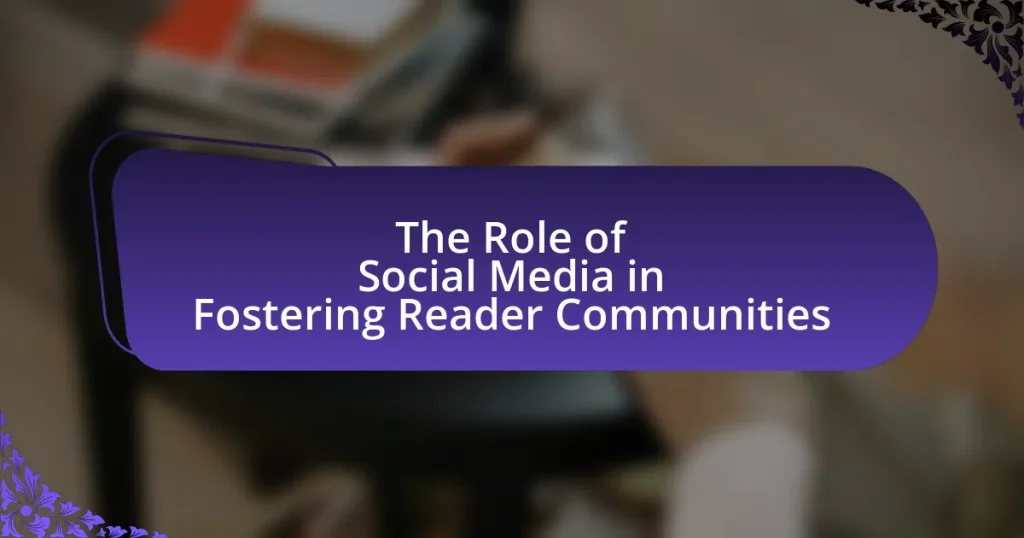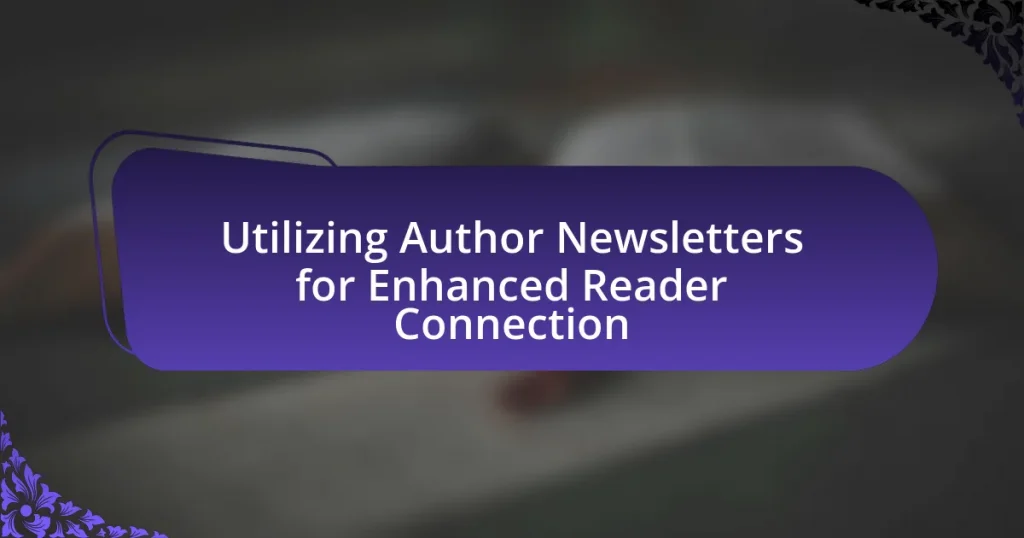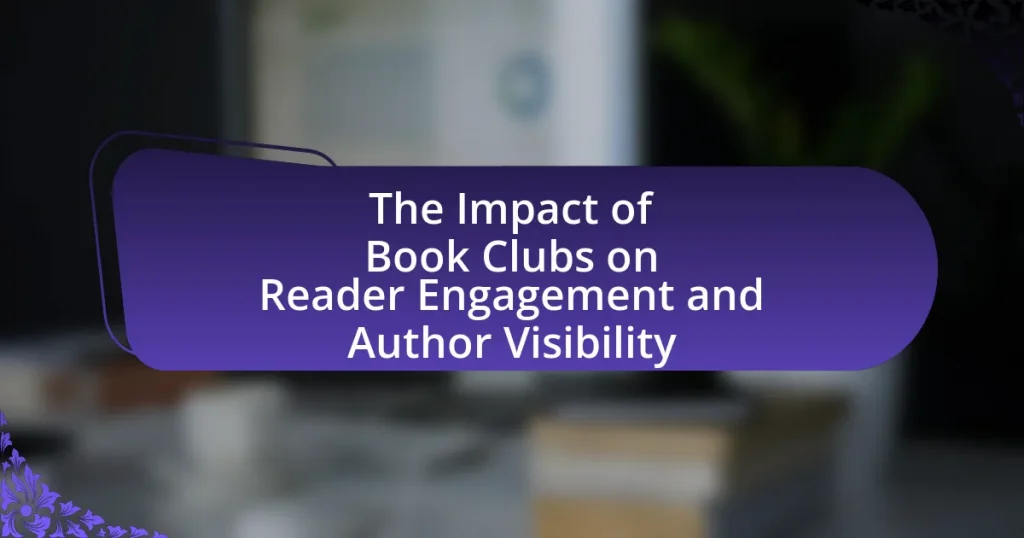Gamification in book publishing involves integrating game-like elements into the reading experience to boost reader engagement and interaction. Key components include points, badges, challenges, and interactive storytelling, which collectively enhance reader motivation and retention. The article explores how these elements create immersive experiences, address challenges faced by the publishing industry, and provide effective strategies for implementation. Additionally, it discusses the importance of rewards and incentives, the role of interactive storytelling, and best practices for assessing the effectiveness of gamification efforts in engaging readers.
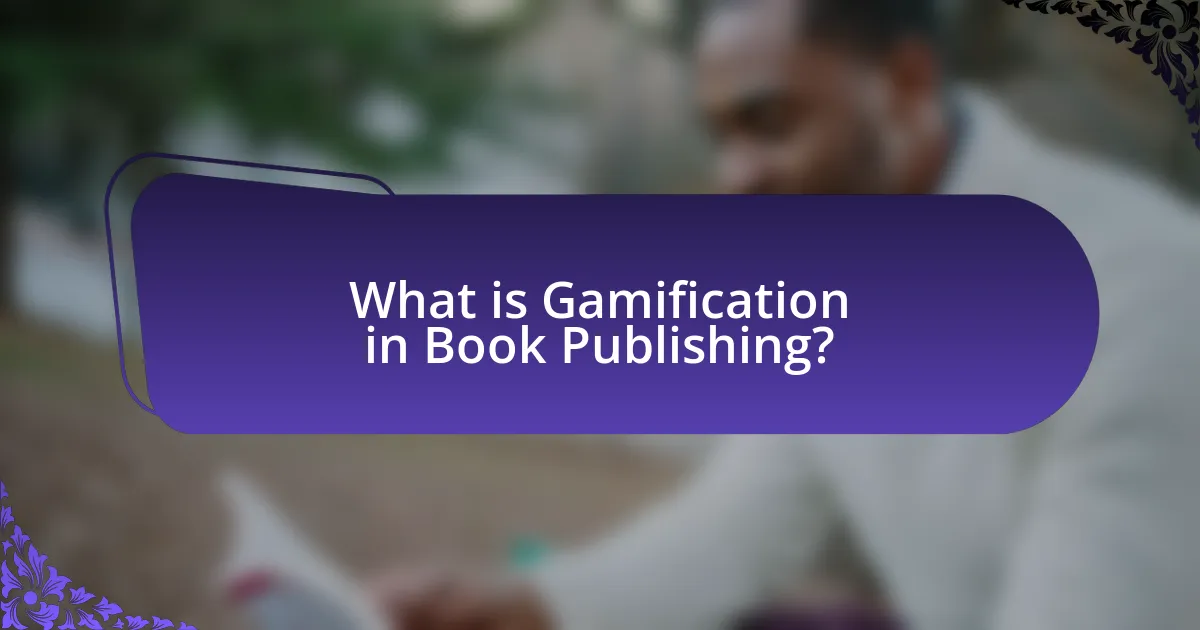
What is Gamification in Book Publishing?
Gamification in book publishing refers to the integration of game-like elements into the reading experience to enhance engagement and interaction. This approach utilizes features such as points, badges, challenges, and rewards to motivate readers and create a more immersive experience. Research indicates that gamification can significantly increase reader retention and satisfaction, as evidenced by a study published in the Journal of Educational Psychology, which found that gamified learning environments improved motivation and engagement by up to 50%.
How does gamification enhance reader engagement?
Gamification enhances reader engagement by incorporating game-like elements into the reading experience, which motivates readers to interact more deeply with the content. This approach leverages techniques such as rewards, challenges, and interactive features that create a sense of achievement and competition. For instance, studies have shown that readers who participate in gamified experiences report higher levels of enjoyment and retention of information, as evidenced by a 2018 study published in the Journal of Educational Psychology, which found that gamification increased engagement by 34% among participants. By transforming passive reading into an active and rewarding experience, gamification effectively captures and maintains reader interest.
What are the key elements of gamification in this context?
The key elements of gamification in the context of book publishing include points, badges, leaderboards, challenges, and interactive storytelling. Points serve as a quantifiable measure of reader engagement, while badges provide visual recognition of achievements, motivating readers to participate more actively. Leaderboards foster competition among readers, encouraging them to engage with the content to improve their rankings. Challenges present specific tasks or goals that readers can complete, enhancing their interaction with the material. Interactive storytelling allows readers to influence the narrative, creating a personalized experience that increases investment in the content. These elements collectively enhance reader engagement and retention, as evidenced by studies showing that gamified experiences can lead to higher levels of participation and satisfaction among users.
How do these elements interact to create an engaging experience?
Gamification elements such as rewards, challenges, and interactivity interact to create an engaging experience by motivating readers to participate actively in the content. Rewards, such as points or badges, incentivize readers to complete tasks, while challenges provide a sense of accomplishment and progression. Interactivity, through features like quizzes or polls, fosters a deeper connection with the material, making the reading experience more immersive. Research indicates that incorporating these elements can increase reader retention and satisfaction, as evidenced by a study published in the Journal of Educational Psychology, which found that gamified learning environments enhance engagement and motivation among participants.
Why is gamification important for modern book publishing?
Gamification is important for modern book publishing because it enhances reader engagement and retention. By incorporating game-like elements such as rewards, challenges, and interactive content, publishers can create a more immersive reading experience that motivates readers to participate actively. Research indicates that gamified experiences can increase user interaction by up to 50%, making it a powerful tool for attracting and retaining audiences in a competitive market. This approach not only fosters a deeper connection between readers and content but also encourages social sharing and community building around books, ultimately driving sales and brand loyalty.
What challenges does the book publishing industry face today?
The book publishing industry faces significant challenges today, including the rise of digital media, which has shifted consumer preferences away from traditional print formats. This transition has led to declining print sales, with e-books and audiobooks gaining popularity; for instance, e-book sales accounted for approximately 20% of the U.S. book market in 2022. Additionally, the industry grapples with issues related to copyright infringement and piracy, which undermine authors’ and publishers’ revenues. Furthermore, the increasing competition from self-publishing platforms has disrupted traditional publishing models, making it harder for established publishers to maintain market share. These challenges necessitate innovative strategies, such as incorporating gamification to engage readers and enhance the reading experience.
How can gamification address these challenges?
Gamification can address challenges in book publishing by enhancing reader engagement and motivation through interactive elements. By incorporating game-like features such as rewards, challenges, and progress tracking, publishers can create a more immersive reading experience that encourages participation. For instance, a study by Deterding et al. (2011) highlights that gamification can increase user engagement by up to 50%, demonstrating its effectiveness in capturing and retaining reader interest. This approach not only makes reading more enjoyable but also fosters a sense of community among readers, ultimately leading to higher satisfaction and loyalty to the content.

What types of gamification strategies are used in book publishing?
Gamification strategies in book publishing include reward systems, interactive storytelling, and reader challenges. Reward systems often involve points, badges, or discounts for completing reading tasks, which incentivizes engagement. Interactive storytelling allows readers to make choices that affect the narrative, enhancing immersion and personal investment in the content. Reader challenges, such as reading competitions or social media campaigns, encourage community participation and foster a sense of achievement among readers. These strategies have been shown to increase reader retention and satisfaction, as evidenced by case studies from publishers who have successfully implemented these techniques to boost engagement metrics.
How do interactive storytelling techniques work?
Interactive storytelling techniques work by allowing readers to influence the narrative through their choices, creating a personalized experience. These techniques often utilize branching storylines, where decisions lead to different outcomes, enhancing engagement and emotional investment. For example, in interactive novels or games, readers may select character actions or dialogue, which directly impacts the plot’s direction. This method has been shown to increase reader retention and satisfaction, as evidenced by studies indicating that interactive formats can lead to higher levels of immersion compared to traditional storytelling.
What are examples of interactive storytelling in published works?
Examples of interactive storytelling in published works include “Choose Your Own Adventure” books, where readers make choices that affect the narrative outcome, and “The Night Circus” by Erin Morgenstern, which incorporates immersive elements and puzzles that engage readers. Additionally, “The 39 Clues” series combines traditional reading with online games and puzzles, allowing readers to participate in the story actively. These examples demonstrate how interactive storytelling enhances reader engagement by allowing them to influence the narrative direction and experience the story in a more participatory manner.
How do readers respond to interactive storytelling?
Readers respond positively to interactive storytelling, often experiencing increased engagement and emotional investment. Research indicates that interactive narratives enhance reader agency, allowing them to influence plot outcomes, which leads to a deeper connection with the story. A study by Ryan and Deci (2000) highlights that autonomy in storytelling fosters intrinsic motivation, resulting in higher satisfaction levels among readers. Additionally, interactive elements can stimulate cognitive engagement, as readers actively participate in decision-making processes, making the experience more immersive. This engagement is supported by findings from a survey conducted by the Pew Research Center, which revealed that 60% of participants felt more connected to stories that allowed for personal choices.
What role do rewards and incentives play in gamification?
Rewards and incentives are crucial in gamification as they motivate users to engage with content and achieve specific goals. By providing tangible benefits, such as points, badges, or discounts, gamification enhances user experience and encourages continued participation. Research indicates that incorporating rewards can increase user engagement by up to 50%, demonstrating their effectiveness in driving interaction and retention in various contexts, including book publishing.
What types of rewards are most effective for engaging readers?
Tangible rewards, such as discounts, exclusive content, and physical merchandise, are most effective for engaging readers. Research indicates that readers are motivated by rewards that provide immediate gratification or enhance their reading experience. For instance, a study published in the Journal of Marketing Research found that offering exclusive content, like bonus chapters or author interviews, significantly increased reader engagement and retention rates. Additionally, providing discounts on future purchases can incentivize readers to continue interacting with the content, as evidenced by a survey conducted by the Book Industry Study Group, which revealed that 70% of readers are more likely to engage with a publisher that offers rewards.
How can publishers implement these rewards successfully?
Publishers can implement rewards successfully by integrating gamification elements that enhance reader engagement and motivation. This can be achieved through the use of point systems, badges, and leaderboards that recognize reader achievements, thereby encouraging continued interaction with the content. Research indicates that gamification can increase user engagement by up to 48%, as demonstrated in studies conducted by the University of Colorado, which found that incorporating game-like features in educational contexts significantly improved participation rates. By aligning rewards with reader interests and providing tangible incentives, publishers can foster a more interactive reading experience that not only retains existing readers but also attracts new ones.
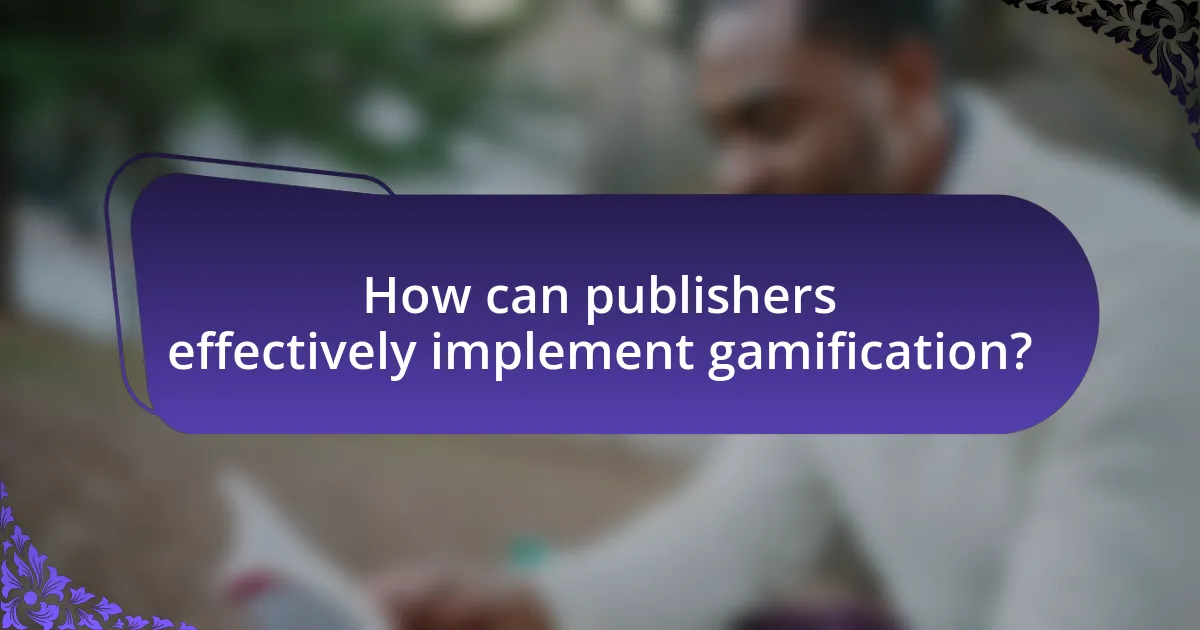
How can publishers effectively implement gamification?
Publishers can effectively implement gamification by integrating interactive elements such as points, badges, and leaderboards into their content. This approach encourages reader engagement and enhances the overall reading experience. For instance, a study by the University of Colorado found that gamified learning environments can increase motivation and retention rates by up to 50%. By incorporating these elements, publishers can create a more immersive experience that not only captivates readers but also fosters a sense of achievement and community among them.
What are the best practices for integrating gamification into books?
The best practices for integrating gamification into books include incorporating interactive elements, providing rewards for engagement, and utilizing storytelling techniques that encourage participation. Interactive elements, such as quizzes, puzzles, or branching narratives, enhance reader involvement and make the reading experience more dynamic. Rewards, such as badges or points for completing chapters or activities, motivate readers to engage more deeply with the content. Additionally, effective storytelling that allows readers to make choices can create a sense of agency, further enhancing their connection to the material. Research indicates that gamification can significantly increase reader engagement and retention, as evidenced by studies showing that interactive content leads to higher completion rates and improved learning outcomes.
How can publishers assess the effectiveness of their gamification strategies?
Publishers can assess the effectiveness of their gamification strategies by analyzing key performance indicators (KPIs) such as user engagement, retention rates, and conversion metrics. For instance, tracking the time users spend interacting with gamified elements can reveal how engaging those features are, while retention rates can indicate whether users return to the content after initial exposure. Additionally, conversion metrics, such as the percentage of users who complete a desired action (like making a purchase or signing up for a newsletter), provide concrete evidence of the gamification strategy’s impact on user behavior. Research shows that gamification can increase engagement by up to 48%, highlighting its potential effectiveness when properly assessed through these metrics.
What tools and technologies can assist in gamification efforts?
Tools and technologies that can assist in gamification efforts include game design software, learning management systems (LMS), and mobile applications. Game design software like Unity and Unreal Engine allows creators to develop interactive experiences that engage users through game mechanics. Learning management systems such as Moodle and Blackboard incorporate gamification elements like badges and leaderboards to enhance user engagement and motivation. Additionally, mobile applications like Kahoot! and Quizizz provide platforms for interactive quizzes and challenges, making learning fun and competitive. These tools have been shown to increase user participation and retention rates in various educational and publishing contexts.
What common pitfalls should publishers avoid when using gamification?
Publishers should avoid the common pitfalls of overcomplicating gamification, neglecting user experience, and failing to align game mechanics with their content. Overcomplicating gamification can lead to confusion and disengagement, as seen in studies where overly complex systems resulted in lower participation rates. Neglecting user experience can diminish the effectiveness of gamification; for instance, if the game mechanics are not intuitive, readers may abandon the interactive elements. Lastly, failing to align game mechanics with the content can create a disconnect, as evidenced by cases where irrelevant rewards led to decreased reader interest and engagement.
How can over-gamification negatively impact the reading experience?
Over-gamification can negatively impact the reading experience by distracting readers from the core narrative and diminishing their engagement with the text. When excessive game-like elements, such as points, badges, or leaderboards, are introduced, they can shift the focus from comprehension and enjoyment of the story to competition and achievement. This shift can lead to superficial reading, where readers prioritize completing tasks over understanding themes and character development. Research indicates that when readers are overly focused on rewards, they may experience decreased intrinsic motivation, which is essential for deep engagement with literature. Consequently, the reading experience becomes fragmented, reducing the overall value and enjoyment derived from the material.
What strategies can mitigate these risks?
To mitigate risks associated with gamification in book publishing, publishers can implement several strategies. First, conducting thorough market research helps identify target audience preferences and potential pitfalls, ensuring that gamified elements resonate with readers. Second, establishing clear guidelines for content creation can prevent misalignment with the book’s themes and objectives, maintaining the integrity of the narrative. Third, incorporating user feedback during the development phase allows for iterative improvements, enhancing user experience and engagement. Lastly, ensuring compliance with copyright and intellectual property laws protects against legal risks, safeguarding both the publisher and the authors involved. These strategies collectively enhance the effectiveness of gamification while minimizing associated risks.
What are practical tips for engaging readers through gamification?
Practical tips for engaging readers through gamification include incorporating interactive elements such as quizzes, challenges, and rewards within the content. These elements enhance reader participation and motivation, as evidenced by a study from the University of Colorado Boulder, which found that gamified learning experiences can increase engagement by up to 50%. Additionally, using progress tracking and achievement badges can create a sense of accomplishment, further encouraging readers to interact with the material. Implementing storytelling techniques that allow readers to make choices can also deepen their connection to the content, as research from the Journal of Educational Psychology indicates that narrative-driven experiences significantly improve retention and enjoyment.

